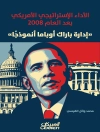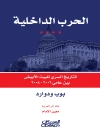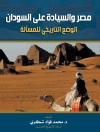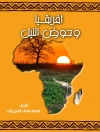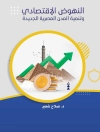Grounded in black feminist scholarship and activism and formally coined in 1989 by black legal scholar Kimberlé Williams Crenshaw, intersectionality has garnered significant attention in the field of public policy and other disciplines/fields of study. The potential of intersectionality, however, has not been fully realized in policy, largely due to the challenges of operationalization. Recently some scholars and activists began to advance conceptual clarity and guidance for intersectionality policy applications; yet a pressing need remains for knowledge development and exchange in relation to empirical work that demonstrates how intersectionality improves public policy. This handbook fills this void by highlighting the key challenges, possibilities and critiques of intersectionality-informed approaches in public policy. It brings together international scholars across a variety of policy sectors and disciplines to consider the state of intersectionality in policy research and analysis. Importantly, it offers a global perspective on the added value and “how-to” of intersectionality-informed policy approaches that aim to advance equity and social justice.
Daftar Isi
1. Introduction: Bringing Intersectionality to Public Policy.- Part I Foundations in the Field.- 2. How Does One Live the Good Life?: Assessing the State of Intersectionality in Public Policy.- 3. Reflecting on Am I a Black Woman or a Woman Who is Black? A Few Thoughts on the Meaning of Intersectionality.- 4. Intersectionality and Public Policy: Some Lessons from Existing Models.- 5. Empirical Intersectionality: A Tale of Two Approaches.- 6. An Intersectionality-Based Policy Analysis Framework: Critical Reflections on a Methodology for Advancing Equity.- 7. The Difference That Power Makes: Intersectionality and Participatory Democracy.- Part II Innovative Methodological Directions and Implications
for Policy Analysis.- 8. Quantitative Approaches to Intersectionality: New Methodological Directions and Implications for Policy Analysis.- 9. Cultivating Intersectional Communities of Practice: A Case Study of the New Mexico Statewide Race, Gender, Class Data Policy Consortium as a Convergence Space for Co-creating Intersectional Inquiry, Ontologies, Data Collection, and Social Justice Praxis.- 10. Beyond Economic Barriers: Intersectionality and Health Policy in Low- and Middle-Income Countries.- 11. Lobbying Suicide Prevention Policy for Gay and Bisexual Men: An intersectionality-Informed Photovoice Project.- Part III Different Perspectives on Persistent Problems.- 12. Understanding Single Womanhood in China: An Intersectional Perspective.- 13. An Intersectionality-Based Framework for Tobacco Control.- 14. ‘If They Beat You and Your Children Have Eaten, That Is Fine…’ Intersections of Poverty, Livelihoods and Violence against Women and Girls in the Karamoja Region, Uganda.- 15. Through the Looking Glass: An Intersectional Lens of South African Education Policy.- 16. Scaling Educational Policy and Practice Intersectionally: Historical and Contemporary Cases from South and Southeast Asia.- Part IV Community Engagement and Advocacy for Change.- 17. Intersectionality and Indigenous Peoples in Australia: Experiences with Engagement in Native Title and Mining.- 18. From Gender Sensitivity to an Intersectionality and Participatory Approach in Health Research and Public Policy in the Netherlands.- 19. Intersectional Analysis of Age in the Context of Rural Health Policy in Ukraine.- 20. Intersectional Advocacy and Policymaking across US States.- 21. Bringing Intersectionality into Danish Public Policy.- 22. Intersectionality and LGBTI Public Policies in Colombia: Uses and Displacements of a Critical Notion.- Part V Challenging Colonization.- 23 Decoloniality and Emancipatory Intersectionality: The Political Organizing of Domestic Workers in Brazil.- 24. “Who Will Use My Loom When I Am Gone?”: An Intersectional Analysis of Mapuche Women’s Progress in Twenty-First-Century Chile.- 25. How Intersectionality-Based Approaches to International Development Illuminate the Plight of Palestine Refugees.- 26. Intersectional Borders in Argentina: Migration, Inequalities and Judicial Colonialism.- 27. Hearing or Listening? Pipeline Politics and the Art of Engagement in British Columbia.- Part VI Responding to New and Pressing Challenges.- 28. Exploring Intersectionality as a Policy Tool for Gender Based Policy Analysis: Implications for Language and Health Literacy as Key Determinants of Integration.- 29. The Significance of Intersectionality in Mental Health-Care Policy in South Africa.- 30. Ageing-in-Place for Low-Income Seniors: Living at the Intersection of Multiple Identities, Positionalities, and Oppressions.- 31. Need and Opportunity: Addressing Diverse Stakeholders and Power in the Conflict over Toolangi State Forest, Victoria, Australia.- 32. Listening for Intersectionality: How Disabled Persons’ Organisations Have Improved Recognition of Difference in Australia’s National Disability Insurance Scheme.- 33. Are we all ‘Baskets of Characteristics?’ Intersectional Slippages and the Displacement of Race in English and Scottish Equality Policy.- 34. Timid Imposition: Intersectional Travel and Affirmative Action in Uruguay.
Tentang Penulis
Olena Hankivsky is Professor in the School of Public Policy and Director of the Institute for Intersectionality Research and Policy at Simon Fraser University, Canada. She is recognized internationally for methodological contributions in relation to intersectionality research and policy.
Julia S. Jordan-Zachery is Professor and Chair of the Department of Africana Studies at the University of North Carolina Charlotte, USA.


